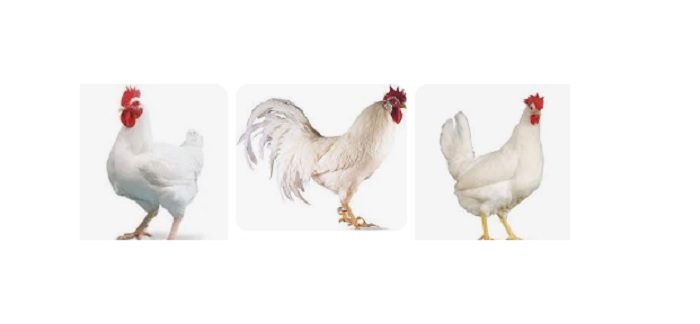Authentic Basics of Disease Prevention for Poultry Farm Health – Do you want to know more about the Authentic Basics of Disease Prevention for Poultry Farm Health? Do you also know that maintaining a healthy and disease-free environment is of paramount importance in the poultry farming industry?
Disease outbreaks can not only lead to severe economic losses but also compromise animal welfare. To ensure the well-being of poultry and the success of the farm, implementing authentic basics of disease prevention is crucial. By incorporating effective biosecurity measures, proper vaccination protocols, and appropriate hygiene practices, poultry farmers can safeguard their flocks and promote a thriving and sustainable poultry farm health system. This is the Authentic Basics of Disease Prevention for Poultry Farm Health.
This article delves into the essential elements of disease prevention in poultry farming, providing valuable insights and practical tips for farmers to protect their flocks from common diseases and maintain optimal flock health.
Why Read This Article?
Table of Contents
Why should our readers be interested in reading bout: Authentic Basics of Disease Prevention for Poultry Farm Health? Readers interested in the authentic basics of disease prevention for poultry farm health will find this article highly valuable for several reasons. This is the Authentic Basics of Disease Prevention for Poultry Farm Health.
Firstly, poultry farming is a significant industry worldwide, with the demand for poultry products continuously increasing. By understanding the fundamentals of disease prevention, farmers can mitigate the risk of disease outbreaks, ensuring a consistent and healthy supply of poultry products.
Secondly, disease outbreaks can have severe consequences for poultry farms, leading to financial losses, increased mortality rates, and potential regulatory issues. By implementing effective disease prevention strategies, farmers can minimize these risks and protect their investments.
Thirdly, consumers, today are increasingly concerned about the quality and safety of the food they consume. By prioritizing disease prevention, poultry farmers can assure consumers that their products meet the highest standards of health and safety, enhancing consumer trust and satisfaction.
Lastly, disease prevention is a fundamental aspect of animal welfare. By implementing proper biosecurity measures and hygiene practices, farmers can promote the well-being of their poultry, reducing the risk of suffering and distress caused by preventable diseases.
Overall, Authentic Basics of Disease Prevention for Poultry Farm Health will provide readers with practical and authentic information on disease prevention in poultry farming, empowering them to make informed decisions and take proactive measures to ensure the health and success of their poultry farms.
Authentic Basics of Disease Prevention for Poultry Farm Health
Importance of disease prevention in poultry farming:
- Disease outbreaks can lead to significant economic losses for poultry farmers.
- Preventing diseases ensures the health and well-being of the flock.
- Disease prevention helps maintain the productivity and profitability of the farm.
Significance of authentic and reliable information:
- Accessing accurate and reliable information is crucial for implementing effective disease prevention strategies.
- Reliable sources such as veterinarians, agricultural extension services, and reputable publications should be consulted.
- Avoiding misinformation and implementing authentic practices are essential for successful disease prevention.
Related Topics:
- How to Write a business plan Market Analysis Segment
- Business Plan Writing: How to Write the Company Description
- How to Write Organization and Management Team Segment of Business Plan
- A Sample private primary school business plan in Nigeria
- Business Plan Product and Services Segment Plan
- Authentic Basics of Disease Prevention for Poultry Farm Health
Understanding Disease Prevention
Biosecurity measures:
Restricting farm access:
- Limiting entry to authorized personnel and visitors.
- Installing secure fencing and gates.
Quarantine protocols for new birds:
- Isolating newly arrived birds for a specified period.
- Conducting health checks and monitoring for signs of disease.
Proper waste management:
- Ensuring proper disposal of carcasses, manure, and other waste materials.
- Regular cleaning and disinfection of poultry houses and equipment.
Vaccination programs: Authentic Basics of Disease Prevention for Poultry Farm Health
Identifying target diseases:
- Consulting with veterinarians to determine the prevalent diseases in the region.
- Choosing appropriate vaccines based on disease prevalence and bird species.
Vaccination schedules and methods:
- Following recommended vaccination schedules for specific diseases.
- Administering vaccines through injection, spray, or drinking water.
Importance of proper administration:
- Ensuring vaccines are stored and handled correctly.
- Administering vaccines according to recommended dosage and techniques.
Nutritional management: Authentic Basics of Disease Prevention for Poultry Farm Health
Balanced feed and supplements:
- Providing a well-balanced diet that meets the nutritional needs of the birds.
- Including supplements and additives to support immune function.
Water quality and hygiene:
- Supplying clean and fresh water to the birds at all times.
- Regularly cleaning and sanitizing water sources and containers.
Regular health monitoring:
- Observing bird behavior, appetite, and growth patterns.
- Seeking veterinary assistance if any health issues are identified.
Disease Identification and Surveillance
Recognizing common poultry diseases:
- Understanding the signs and symptoms of prevalent poultry diseases.
- Conducting regular health checks and inspections.
Early detection techniques:
Visual inspection of birds:
- Monitoring for changes in behavior, appearance, or performance.
- Identifying signs of illness, such as reduced activity, respiratory distress, abnormal feces, or decreased feed consumption.
- Authentic Basics of Disease Prevention for Poultry Farm Health
Laboratory testing:
- Collecting and submitting samples to veterinary laboratories for diagnostic testing.
- Collaborating with veterinarians to interpret test results and determine appropriate actions.
Disease reporting and record-keeping:
Importance of timely reporting:
- Reporting suspected or confirmed disease cases to local veterinary authorities.
- Complying with legal requirements and regulations.
Maintaining accurate health records:
- Documenting vaccination history, treatment protocols, and disease occurrences.
- Keeping track of mortality rates and performance indicators.
External Threats and Biosecurity Measures
Wild bird and wildlife control:
- Preventing contact between domestic birds and wild birds or other wildlife species.
- Installing bird netting, deterrents, or scare devices to minimize wild bird presence.
Pest Management: Authentic Basics of Disease Prevention for Poultry Farm Health
- Implementing pest control measures to minimize the risk of disease transmission.
- Regularly inspecting and treating poultry houses for pests such as rodents, insects, and mites.
Minimizing human traffic and equipment movement:
- Implementing strict protocols for farm personnel and visitors, including the use of designated entry points, footbaths, and protective clothing.
- Restricting unnecessary movement of equipment and vehicles onto the farm to minimize the introduction of pathogens.
Training and Education for Farm Workers
Promoting awareness and understanding of disease prevention:
- Conducting regular training sessions to educate farm workers about the importance of disease prevention.
- Providing information on common poultry diseases, their transmission routes, and preventive measures.
- Emphasizing the role of personal hygiene and biosecurity practices in preventing disease spread.
- Authentic Basics of Disease Prevention for Poultry Farm Health
Proper hygiene practices:
- Instructing farm workers on proper handwashing techniques, personal protective equipment (PPE) usage, and sanitation protocols.
- Encouraging the use of disinfectants and sanitizers at critical control points, such as entryways and poultry houses.
Regular training sessions and updates:
- Organizing refresher training sessions to reinforce disease prevention practices.
- Keeping farm workers informed about new developments in disease management and prevention through regular updates.
Collaboration with Veterinarians and Experts
Establishing relationships with poultry health professionals:
- Consulting with veterinarians experienced in poultry health for guidance and support.
- Establishing a working relationship with local veterinary authorities and seeking their expertise when needed.
- Authentic Basics of Disease Prevention for Poultry Farm Health
Seeking guidance for disease prevention strategies:
- Collaborating with veterinarians to develop customized disease prevention strategies based on specific farm conditions and disease risks.
- Seeking advice on vaccination programs, biosecurity measures, and disease surveillance protocols.
Regular farm visits and consultations:
- Inviting veterinarians for regular farm visits to assess biosecurity measures, evaluate bird health, and provide recommendations for improvement.
- Participating in workshops or seminars conducted by experts to stay updated on the latest advancements in disease prevention.
Constant Evaluation and Adaptation
Monitoring disease trends and outbreaks:
- Staying informed about disease trends in the region and worldwide.
- Monitoring disease outbreak alerts and updates from local veterinary authorities and industry organizations.
- Authentic Basics of Disease Prevention for Poultry Farm Health
Assessing the effectiveness of prevention measures:
- Regularly evaluating the success of implemented disease prevention strategies.
- Monitoring key performance indicators, such as mortality rates, disease incidence, and flock productivity.
Making necessary adjustments to disease prevention strategies:
- Adapting prevention measures based on lessons learned from previous experiences and emerging disease threats.
- Updating biosecurity protocols, vaccination programs, and management practices as needed.

Related Topics:
These related topics are very important to understanding the Authentic Basics of Disease Prevention for Poultry Farm Health.
- What are the best practices to prevent diseases in poultry?
- What is biosecurity as a method of disease prevention?
- And, what is the biosecurity program in poultry?
- What are the 7 common types of disease chickens have?
- Authentic Basics of Disease Prevention for Poultry Farm Health
To prevent diseases in poultry, several best practices can be followed:
Biosecurity:
Implement strict biosecurity measures to minimize the risk of disease introduction. This includes controlling access to poultry farms, limiting visitors, and maintaining proper hygiene protocols.
Vaccination:
Follow a vaccination program recommended by a veterinarian to protect poultry against specific diseases. Vaccination helps to build immunity and reduce the severity of outbreaks. Authentic Basics of Disease Prevention for Poultry Farm Health
Cleanliness and Sanitation:
Maintain clean and hygienic conditions in the poultry house. Regularly clean and disinfect equipment, housing, and facilities to prevent the buildup of pathogens.
Pest and Rodent Control:
Control pests and rodents that can transmit diseases to poultry. Implement measures such as trapping, baiting, and proper waste management to minimize the risk of infestations.
Quarantine:
Isolate new birds or birds returning from shows or other locations for a specific period to monitor their health status before introducing them to the existing flock. Authentic Basics of Disease Prevention for Poultry Farm Health
Good Management Practices:
Implement proper flock management techniques, including providing balanced nutrition, adequate ventilation, and access to clean water. Maintain appropriate stocking densities to reduce stress and the spread of diseases.
Surveillance and Monitoring:
Regularly monitor the flock for signs of illness and promptly report any unusual symptoms to a veterinarian. Early detection and response can help prevent the spread of diseases.
Biosecurity is a set of measures and practices implemented to minimize the risk of introducing or spreading infectious diseases in a population of animals or plants. In poultry farming, biosecurity refers to the implementation of protocols and procedures to prevent the entry and spread of diseases within a poultry farm or between farms. Authentic Basics of Disease Prevention for Poultry Farm Health
A biosecurity program in poultry is a comprehensive plan that includes specific measures and protocols to minimize the risk of disease introduction and transmission. It encompasses a range of practices, such as controlling access to the farm, practicing good sanitation and hygiene, monitoring flock health, and implementing vaccination programs. A biosecurity program is tailored to the specific needs and risks of each poultry farm and is usually developed in consultation with a veterinarian or animal health professional.
The following are seven common types of diseases that can affect chickens:
Infectious Bronchitis (IB):
A viral respiratory disease that causes respiratory distress, coughing, and reduced egg production.
Newcastle Disease (ND):
A highly contagious viral disease that affects the respiratory, nervous, and digestive systems. It can cause high mortality rates in infected flocks. Authentic Basics of Disease Prevention for Poultry Farm Health
Avian Influenza (AI):
A viral disease that can range from mild to highly pathogenic strains. It affects the respiratory and gastrointestinal systems, and in severe cases, can lead to high mortality rates.
Infectious Bursal Disease (IBD):
A viral disease that primarily affects young chickens, causing immunosuppression and increased susceptibility to secondary infections. Authentic Basics of Disease Prevention for Poultry Farm Health
Marek’s Disease:
A viral disease that causes tumors, paralysis, and immunosuppression. It primarily affects young chickens.
Coccidiosis:
A parasitic disease caused by protozoa of the genus Eimeria. It affects the intestinal tract and can cause diarrhea, weight loss, and reduced growth rates.
Salmonellosis:
A bacterial infection caused by various strains of Salmonella. It can cause diarrhea, decreased egg production, and in severe cases, mortality.
It’s important to note that many other diseases can affect poultry, and consulting with a veterinarian or an animal health professional is crucial for accurate diagnosis, prevention, and treatment.

Read Also: Authentic Basics of Disease Prevention for Poultry Farm Health
- Poultry Farming Broiler Vaccination & Medication For Today’s Farmer
- Poultry Farming Feed Management Tips For Today’s Farmer
- Business Information Enquiries on Poultry Farming in Nigeria
- Poultry Farming – Heat Stress Management Tips
- Poultry Farming – Bio Security Measures
- Quality Guide to Poultry Farming Vaccination and Medication Programs
- Poultry and Livestock farming
- How to maintain good hygiene for poultry
- Importance of Poultry vaccination and medication
- Amazing importance of Poultry Farm vaccination and medication.
- How to discover poultry diseases
- And Poultry Farming Routine Management Practice for Today’s Farmer
- How to Maximize Poultry Health and Productivity
- Understanding the Different Types of Vaccines and Medications for Poultry Farming
Summing Up:
This is the Authentic Basics of Disease Prevention for Poultry Farm Health. And, the following summarises the basic facts.
- Relying on reputable sources and expert guidance to ensure the accuracy and effectiveness of disease prevention strategies.
- Implementing comprehensive biosecurity measures, vaccination programs, and proper nutritional management.
- Promoting a culture of vigilance and accountability among farm workers.
- Recognizing that disease prevention is an ongoing process that requires staying informed, adapting to new challenges, and collaborating with experts.
- Striving for continuous improvement to safeguard the health and welfare of the poultry flock and the long-term success of the farm.
- Authentic Basics of Disease Prevention for Poultry Farm Health
In conclusion, establishing and maintaining a strong foundation of disease prevention is vital for the overall health and well-being of poultry farms. By implementing authentic and effective measures such as strict biosecurity protocols, proper vaccination programs, regular health monitoring, and hygiene practices, poultry farmers can significantly reduce the risk of disease outbreaks.
Additionally, promoting a healthy environment, providing a balanced diet, and ensuring appropriate flock management further enhance disease resistance. Remember, prevention is always better than cure when it comes to safeguarding the health of poultry, and with the right strategies in place, farmers can create a thriving and disease-free environment for their flocks, ensuring the success and sustainability of their operations. Now, bookmark and share Authentic Basics of Disease Prevention for Poultry Farm Health. Follow and like us also on our social media handles.

Deacon Anekperechi Nworgu, a seasoned economist who transitioned into a chartered accountant, auditor, tax practitioner, and business consultant, brings with him a wealth of industry expertise spanning over 37 years.



